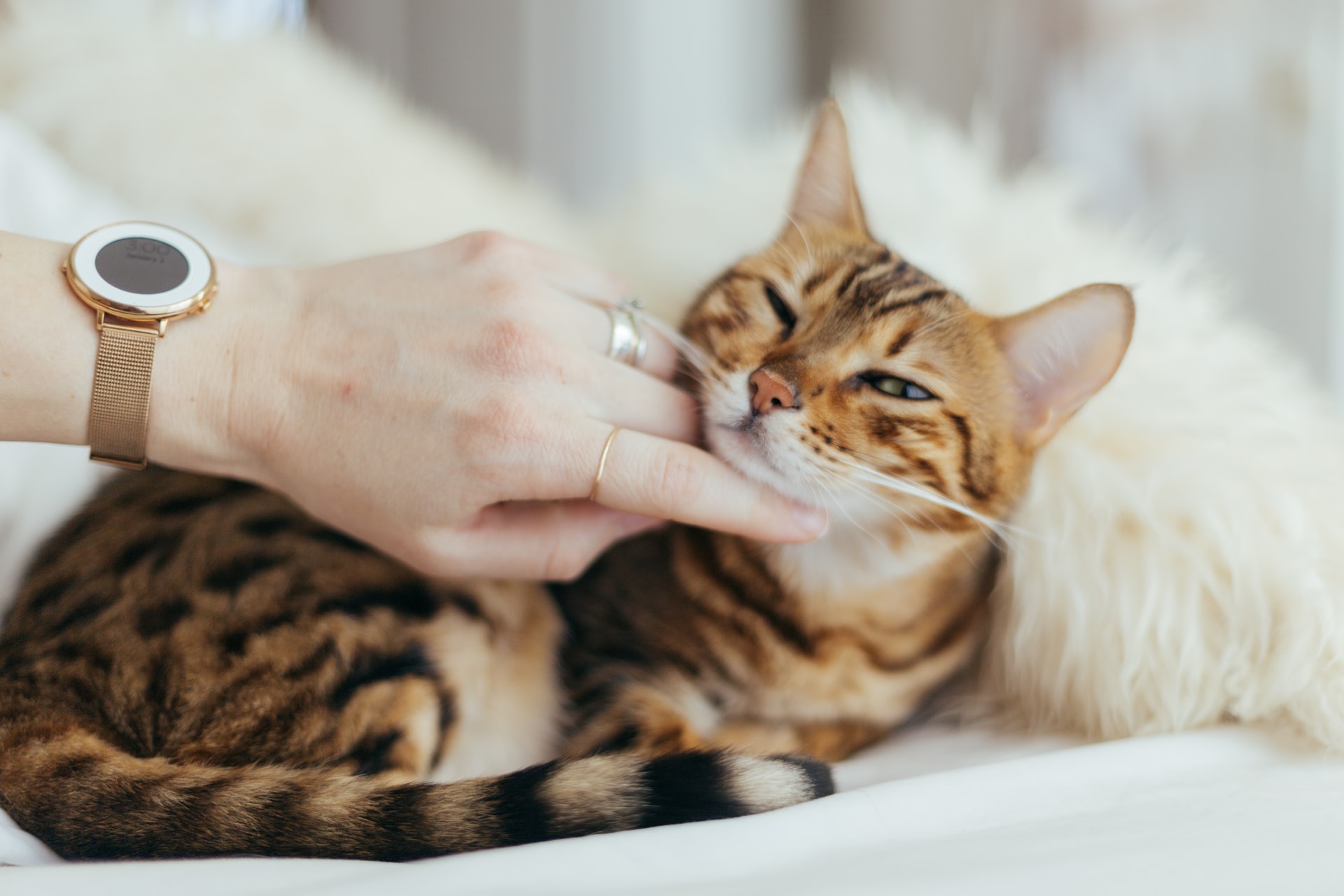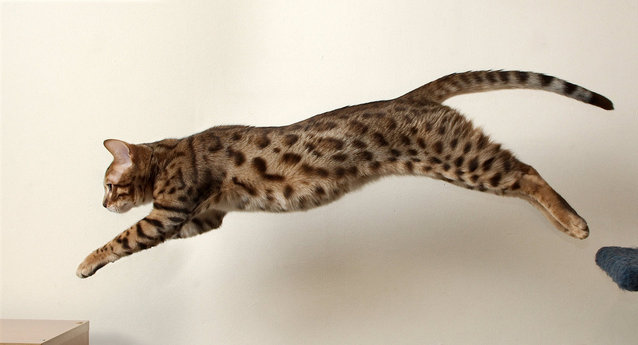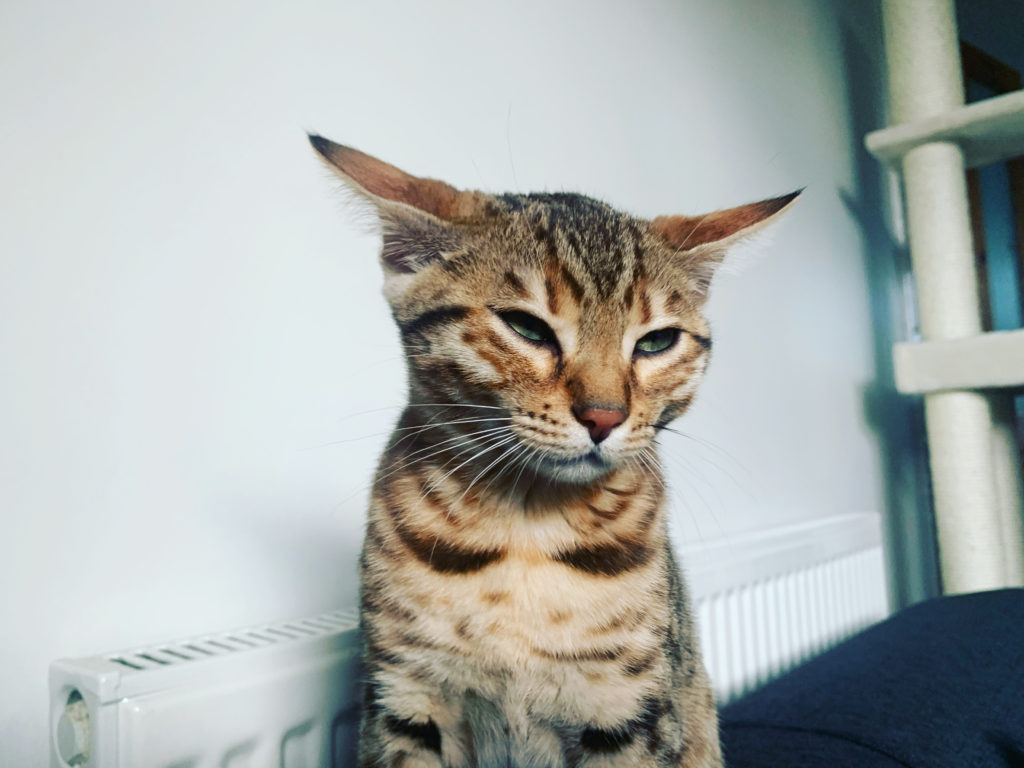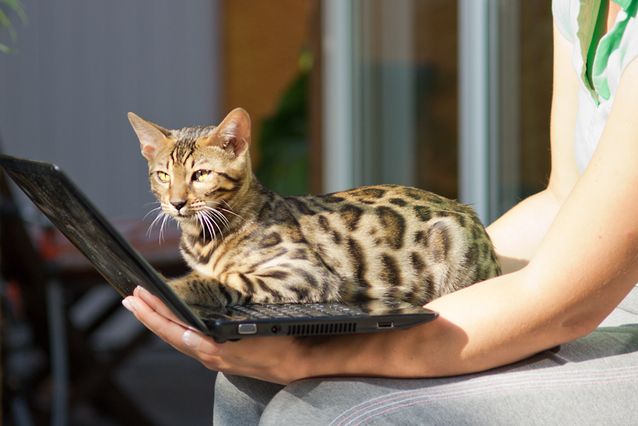As a Bengal cat owner, or if you’re thinking of owning one, you may be asking “how long do Bengal cats live?”
And of course, you’ll want your pet to live as long and as happy a life as possible.
A Bengal cat’s life expectancy ranges from 12-20 with an average of around 15 years (depending on what you read…)
Knowing what’s best may not be completely straight forward as a myriad of factors can affect the life expectancy of Bengal cats, and indeed, any cat breed.
This article delves into the most important aspects and how you can implement positive change right away.
How to Increase a Bengal Cat’s Life Expectancy
#1: Check Your Cat’s Family History And Genetic Lineage
Our first post of call when considering the question ‘how long do Bengal cats live?’ concerns genetics.
Genetic make-up can play a significant role in life expectancy due to either susceptibility to disease or environmental conditions.
Although cats can ‘tolerate’ inbreeding more successfully than many any other species, a purebred cat, i.e. one with less genetic mixing, will have a lower life expectancy.
Bengal cats are purebred, however, they are a relatively new breed (date of origin varies according to source, but they were accepted by The International Cat Association (TICA) in 1983).
The product of crosses originally between a domestic cat and an Asian leopard cat makes Bengals genetically more diverse than many other purebred breeds.
Diversity can be increased further when Bengals are bred with those that come from a different leopard cat subspecies.
What you can do:
- Find out the lineage or family history of any Bengal kittens you wish to buy.
- Ask the breeder how they maintain genetic diversity and whether they use Bengals from ‘outside’ in their breeding programs.
#2: Screen for Serious Genetic Diseases

The Bengal cat breed requires genetic screening for defects that could cause life-threatening health problems later in life.
This screening is for Pyruvate Kinase deficiency (PK def), which results in a host of symptoms including anaemia, and Progressive Retinal Atrophy (PRA), a degenerative eye condition.
Hypertrophic Cardiomyopathy (HCM) which causes heart failure, is believed to have a genetic component, but currently there are no genetic tests for Bengals for this condition.
What you can do:
- Ask to see the results of DNA tests for PK def and PRA (or the results of the parents). This will indicate whether the kitten is negative, a carrier (but not affected by the condition) or has both faulty genes.
- HCM is harder to detect in kittens so ask the breeder whether their adult cats have been scanned, to what age, and/or whether the kittens are from screened lines.
#3: Get Your Cat’s Health Checked By A Professional
All good breeders have their Bengals tested and checked by a suitably qualified professional.
Bengal cat health issues may go undetected and can be present long before any symptoms develop.
Some, such as HCM, as mentioned in the previous section, may also only develop during adulthood.
Regular health checks increase the likelihood of disease or injury being identified early, which is good news for you and your cat.
A typical check will include measuring body temperature, blood pressure, heart rate and weight with your Bengal‘s eyes, ears, fur, teeth, joints and lymph nodes all being examined.
What you can do:
- Ensure your Bengal kitten has been health checked before you purchase it.
- To reduce the chances of your cat having HCM, buy from lines known to be HCM free.
- The Royal Veterinary College in London recommends having your pet checked once a year, or every 6 months for older animals (cats over 10 years old)
#4: Have Your Bengal Vaccinated As A Kitten
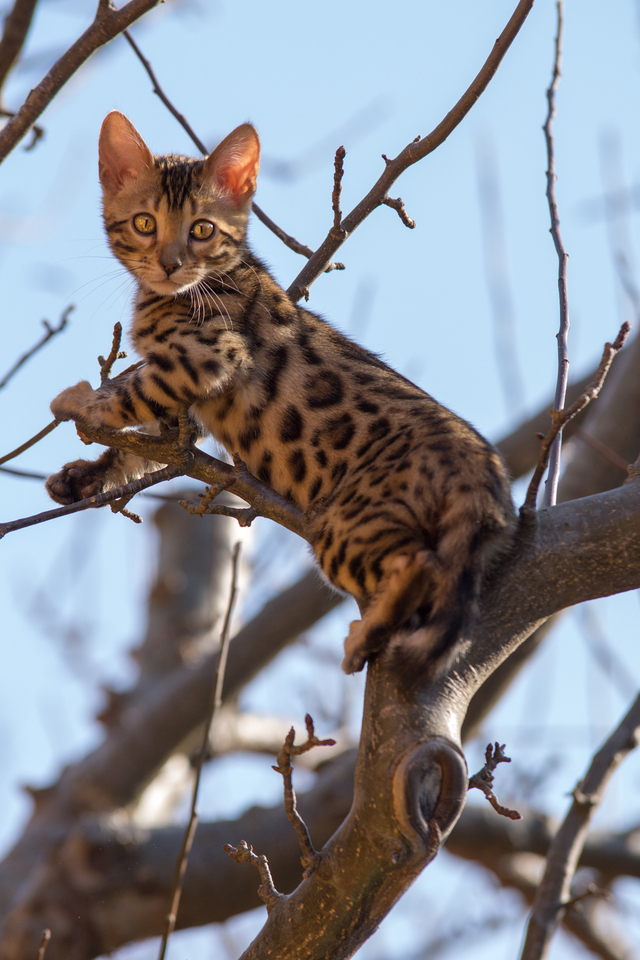
Vaccination is a proven method of preventing viral disease.
Therefore, a vaccinated Bengal is less likely to contract a virus and die prematurely.
So called ‘core’ vaccines are common throughout many Western countries and are considered essential.
These immunise against the following viruses with the first three often given in combination:
Feline Panleukopenia Virus (FPV), Feline Herpes Virus (FHV-1), Feline Calicivirus (FCV), Rabies (in some countries).
Another common inoculation is against Feline Leukaemia Virus (FLV).
This may be included as standard although some Bengal owners decide not to immunise for this virus if theirs is to be a house cat.
What you can do:
- Ask for evidence that the kitten you intend to buy has had the appropriate vaccines for its age and the region you live in.
- Maintain the required vaccine regimen, particularly if your Bengal roams freely, interacts with cats outside your household and is at greater risk of catching something- a virus, not a rodent.
#5: Neuter Your Cat To Avoid Disease
Having your Bengal go under the knife to have its means of reproducing removed may not instantly strike you as a good way of increasing its life expectancy.
But in general, neutered Bengal cats live longer.
This is because there is less risk of certain cancer types, sexually transmitted disease and in a male Bengal, castration will lead to less aggressive behaviour (and therefore less fighting with other cats).
Unless buying a Bengal for breeding, some breeders will have you sign a contract to ensure your kitten is neutered by a certain age.
Only then will they provide you with proof of registration.
What you can do:
- Some kittens will be sold after being neutered, so it’s a case of seeing this documented.
- Whilst researching this article, I found the age at which it was advised to get a kitten neutered was as little as 8 weeks up to from 6 months old. Best to ask the breeder.
- Cats may gain weight after neutering so ensure they eat a healthy diet and exercise frequently.
#6: Feed Your Cat A High Quality, Nutrient Rich Diet
Diet is arguably THE MOST significant contributing factor to the life expectancy of Bengal cats- especially those kept indoors.
How long do Bengal cats live for? Not as long if they’re not fed appropriately.
A good diet will help prevent dietary based disease, maintain a healthy body weight and boost immunity.
Cats are obligate carnivores, therefore they must eat meat to survive and indeed, thrive.

Things start to get complicated when trying to establish exactly what is the best meat diet for your Bengal.
Many sites I came across promoted a balanced raw meat diet- one that contains roughly 80% muscle protein, 10% organ and 10% bone, plus essential vitamins and minerals.
However, there was no definitive answer as to what the optimal raw diet for a Bengal cat actually comprised of.
It would be logical to assume that the best diet would be the most natural for a Bengal and therefore raw, but a balanced raw diet can be hard to achieve.
Some science research papers claim that evidence supporting a raw diet is minimal- see here and here.
Indeed the Centers for Disease Control and Prevention does not recommend feeding a raw diet to pets.
This is not to do with nutrition- more the increased risk of humans and cats being infected with bacteria from meat.
It seems a compromise may come in the form of ‘complete’ tinned food and avoiding dry food altogether.
What you can do:
- This is very much about how you feel with regards to raw meat- either making your own balanced meals or shop bought (see here for further information about raw cat food).
- A safer compromise is tinned, complete cat food- perhaps supplemented with raw food now and again.
- (Good) breeders may provide you with samples of (good quality) food with your Bengal kitten. This is a (good) starting point.
The Oldest Bengal Cat: One woman claims hers lived to be 34 years old, which if true, would make it the longest living, coming in at over double the average Bengal cat life expectancy.
#7: Water, Water Everywhere. Keep Your Bengal Hydrated
Perhaps not everywhere exactly…
But the amount of water your Bengal has access to is also important.
Too little and there is a risk of dehydration which can lead to vomiting and diarrhoea.
Dehydration itself could also be a symptom of a more sinister underlying disease such as diabetes.
It can also affect diagnostic tests for other Bengal cat health issues such as cardiomyopathy.
What you can do:
- Most of the water required by cats is derived from meat, but it’s vital you give your Bengal cat water (in multiple areas around your home), especially if they regularly consume dry food.
- Some cats can be fussy, so if necessary, vary water temperature, source, and the dish or container they drink from.
- Look out for the symptoms of dehydration which include panting, sunken eyes, dry sticky/tacky gums, and a lack of interest in playing and eating.
- See below for the ‘skin tent’ test for dehydration (it’s not a Bengal cat, but you’ll get the idea)
#8: Do Not Overlook The Importance Of Dental Care
Dental health is strongly linked to diet.
Poor dental health gives rise to the possibility of your Bengal falling prey to a host of gum related diseases, infections and stomatitis- which is inflammation of the mouth and lips.
One research paper found that cats fed on a dry food diet had significantly less dental problems than those who ate wet food.
However, dry foods may not be best for your kitty’s optimal health in terms of nutrients or hydration.
What you can do:
- If you’re happy to feed your cat raw food, then uncooked meat with bone fed at least once a week is said to act as a natural ‘toothbrush’.
- Additionally or in preference to the above, The Veterinary Oral Health Council has produced a list of approved cat oral care products some of which, can be bought online or in stores.
- A regular health check (as mentioned in #3) should catch signs of dental disease, hopefully at earlier, more treatable stages.
#9: Regularly Exercise Your Pet With Play Or Walks
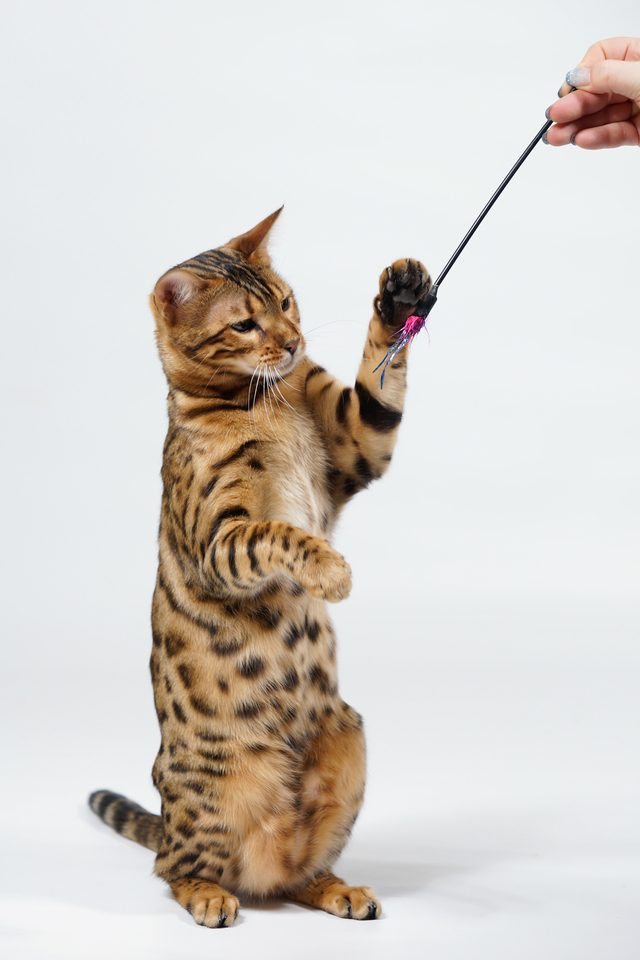
Talking from personal experience, a Bengal kitten is a very active creature, capable of turning your living room into a running track-playground hybrid.
Not only do they enjoy exercise, they need it.
A lack of exercise can lead to an increased body weight and associated health problems linked to diet and a sedentary lifestyle.
Alongside a good, balanced diet, exercise can help keep your Bengal’s bodyweight within healthy parameters.
Figures for this vary but roughly range from 6-10lbs (2.7-4.5kg) for a female Bengal, with males between 10-15lbs (4.5-6.8kg), though one site suggested larger specimens could weigh as much as 22lbs (10kg).
How long do Bengal cats live? Well a low, healthy bodyweight = longer life expectancy.
What you can do:
- Play with house cats as often as possible, though there’s a good chance you’ll tire out before they do…
- If you have a small home, consider taking your cat for a walk (see The Best Bengal Cat Harness [2022])
- Weigh your cat every few months- although this will be done as part of a health check also.
#10: Avoid Contact With Potentially Carcinogenic Pollutants And Toxins
As with humans, cancer is one of the leading causes of death in cats.
This is primarily due to diet and the environment.
Environmental pollutants and toxins found in or on plants could prove harmful to your cat and even carcinogenic.
Cats will often eat from the floor and frequently put random bits and pieces into their mouths (especially as kittens).
Their cleaning regime makes them prone to ingesting any chemicals that may be on their fur or feet.
Even the food they consume could well be dangerous- fish contaminated with lead and mercury for example.
What you can do:
- Limit your use of chemicals such as fertilisers, pesticides and bleach or keep your cat away from areas where they are used.
- Ensure your home or garden does not contain plants on this list compiled by the American Society for the Prevention of Cruelty to Animals (or keep them out of reach from your Bengal) Warning: it is pretty extensive.
#11: Home Is Where The Heart Is And Where Your Bengal Should Be
According to one study, the highest cause of death in England across cats of all types and ages is trauma.
Reasons for this include road accidents and injuries, fights with other domestic cats and dogs or depending on where you live, wild animals.
And these are far more likely to happen to cats allowed to roam freely outside.
How long do Bengal cats live if kept indoors?
The book ‘What Cats Want’ by Dr. Yuki Hattori, director of the Tokyo Feline Medical Centre, states that indoor cats on average have a longer life expectancy.
Indoor cats live to an average age of 15 years, compared to 12 years for those that are allowed out.

Although cats that go outside may exercise more and are less exposed to chemicals around the home, the cost of greater freedom may be a shorter life.
What you can do:
- Keep your Bengal as a house cat (which is not uncommon for the breed) especially if you live near a main road.
- Exercise your Bengal indoors regularly or think about leash training to compensate for it not being able to go outside alone (see The Best Bengal Cat Harness [2022]).
#12: Know Your Cat Inside And Out
All of the above advice will become insignifact if you don’t know enough about your cat to recognise there is something wrong.
Bengals can’t talk and tell you they have a problem (although sometimes they give it a ruddy good go…) and so it’s up to you to identify changes from the norm which can often be subtle.

Any change in eating or drinking habits, behaviour, stool, or physical appearance for example, could indicate something untoward.
What you can do:
- Spend as much time as you can getting to know all aspects of your cat and how it lives its life.
- If you identify something wrong and can’t remedy it, arrange a health check by a professional, as early intervention usually leads to better outcomes.
How Long Do Bengal Cats Live? Summary
It’s not easy knowing what is best for your Bengal, especially for new owners with no previous experience of raising cats.
And there’s a lot of information, some of which is conflicting, especially with advice regarding diet.
The life expectancy of Bengal cats can be increased and I hope this article has provided you with many actionable ways you can improve your Bengal’s quality of life and indeed, it’s life expectancy.
It certainly made me review some of my practices.
How long do Bengal cats live for? Part of that is up to you.
Know your cat and do your best.
So which of the 12 areas are you going to review and improve first?
Further Reading:
Resources:
Longevity and mortality of cats attending primary care veterinary practices in England
O’Neill et al 2014
Erythrocyte Pyruvate Kinase Deficiency mutation identified in multiple breeds of domestic cats
Grahn et al 2012
The Royal Veterinary College, London
Raw diets for dogs and cats: a review, with particular reference to microbiological hazards
Davies et al 2019
Raw food diets in companion animals: A critical review
Schlesinger and Joffe 2011
Centers for Disease Control and Prevention
Catinfo.org
Dry foods and risk of disease in cats
Buffington 2008
Central diabetes insipidus in five cats: clinical presentation, diagnosis and oral desmopressin therapy
Aroch et al 2005
The effect of hydration status on the echocardiographic measurements of normal cats
Campbell and Kittleson 2007
Feline dental disease
Frost and Williams 1986
The Choice of Diet Affects the Oral Health of the Domestic Cat
Mata 2015
Veterinary Oral Health Council
The American Society for the Prevention of Cruelty to Animals
Please note, Amazon links on this page are affiliate links from which I’ll receive a small percentage if you purchase at no extra cost to you. It all helps. Thanks.

